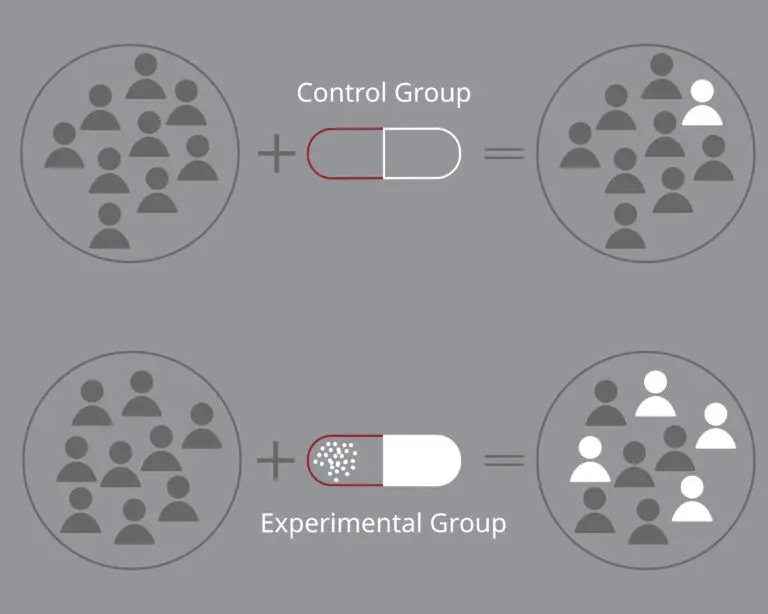Treatment Group

Table of Contents
Treatment Group Definition
A treatment group, also known as an experimental group, is a group of participants in an experiment who receive the experimental treatment or intervention being studied.
The purpose of the treatment group is to investigate the effects of the independent variable(s) on the dependent variable(s) compared to a control group or other conditions.
Purpose
- The treatment group assesses the impact of the independent variable(s) on the outcome of interest, typically the dependent variable(s).
- Researchers manipulate the treatment group’s independent variable(s) to observe any changes or effects on the dependent variable(s).
Experimental Manipulation
The treatment group experiences the experimental manipulation, which could involve receiving a specific drug, undergoing a training program, being exposed to a stimulus, or any other intervention related to the research question.
The experimental manipulation is designed to test hypotheses and determine whether the independent variable(s) have a causal effect on the dependent variable(s).
Comparison with Control Group
In experimental designs, the treatment group is often compared to a control group that does not receive the experimental treatment. This comparison helps assess the effectiveness of the treatment by controlling for extraneous variables.
The control group serves as a baseline for comparison, allowing researchers to determine whether any observed changes in the treatment group are due to the experimental treatment or other factors.
Random Assignment
Participants are typically assigned randomly to either group to ensure the validity of the comparison between the treatment and control groups. Random assignment helps minimize biases and ensures that both groups are similar regarding characteristics that could influence the results.
Types of Treatments
- Treatments in experimental research can vary widely depending on the research question and objectives. They may include pharmacological treatments, behavioral interventions, educational programs, psychological therapies, or environmental manipulations.
- The treatment group may receive a single treatment, multiple treatments, or varying levels of treatment intensity to investigate dose-response relationships.
Statistical Analysis
After collecting data from the treatment and control groups, researchers use statistical analysis techniques to compare outcomes between the groups and determine the significance of any observed differences.
Statistical tests such as t-tests, ANOVA (Analysis of Variance), regression analysis, or non-parametric tests are used to analyze data and draw conclusions about the effects of the treatment.
Treatment Group Example
The Scenario
Imagine a pharmaceutical company conducting a clinical trial to evaluate the effectiveness of a new drug in treating a certain medical condition, let’s say, hypertension (high blood pressure). The study involves two groups of participants.
Participant Groups
Treatment Group: This group consists of participants who receive the new drug being tested for hypertension. They are administered the drug according to the prescribed dosage and schedule.
Control Group: This group consists of participants who do not receive the new drug but may receive a placebo (inactive substance) or standard treatment (existing medication for hypertension) for comparison purposes.
Study Design
- Participants with hypertension are recruited and randomly assigned to either the treatment group or the control group. Random assignment helps ensure that any differences between the groups are due to the treatment received and not other factors.
- The treatment group receives the new drug, while the control group either receives a placebo or standard treatment, depending on the study design.
- Both groups are monitored over a specified period, during which various measurements related to blood pressure, side effects, and overall health are collected.
- At the end of the study, researchers analyze the data to compare the new drug’s effectiveness in reducing blood pressure to that of the control group.
Summary
In this case, the treatment group represents the experimental group that receives the specific treatment (new drug) under investigation. Comparing outcomes between the treatment group and the control group helps researchers evaluate the efficacy and safety of the treatment and draw conclusions about its potential benefits for patients with hypertension.
Related Links
Analysis of Variance
Causation
Control Group
Z-Score